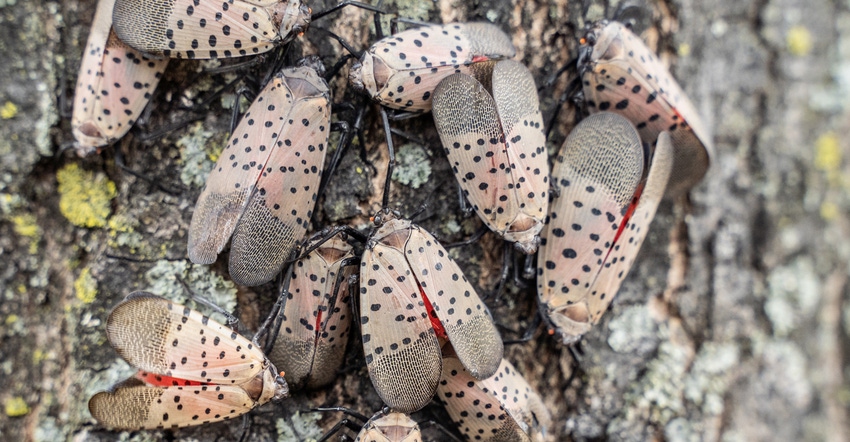June 30, 2022

If you see a spotted lanternfly, kill it, squash it, smash it, just get rid of it, advises the Pennsylvania Department of Agriculture, which reports the invasive species from Asia has spread to multiple counties that are now quarantined.
The spotted lanternfly causes serious damage, including oozing sap, wilting, leaf curling and dieback in trees, vines, crops and many other types of plants. In addition to plant damage, when spotted lanternflies feed, they excrete a sugary substance, called honeydew, that encourages the growth of black sooty mold. This mold is harmless to people. However, it causes damage to plants.
In counties infested and quarantined for spotted lanternfly, residents report hundreds of these bugs that affect their quality of life and ability to enjoy the outdoors during the spring and summer months. Spotted lanternflies will cover trees, swarm in the air, and their honeydew can coat decks and play equipment.
In 2014, it was found in Pennsylvania and has since spread to multiple counties. In the fall, these bugs will lay egg masses with 30 to 50 eggs each.
If you see a spotted lanternfly, the Pennsylvania Department of Agriculture (PDA) says it's imperative to immediately report it online or via phone by calling 1-888-4BADFLY — especially if the pest is seen outside of the quarantine zone.
A quarantine and treatment order is in place to help prevent the spread of spotted lanternfly in Pennsylvania. Quarantine zones may be expanded to new areas if SLF detections are confirmed. The interactive SLF quarantine map provides information on whether your location is quarantined for SLF.
Ag impact
In addition to damaging trees and affecting quality of life, the spotted lanternfly is a threat to the Pennsylvania agriculture industry. The economic impact could total in the hundreds of millions of dollars and hundreds of thousands of jobs for those in the grapes, apple, hops and hardwood industries.
The spotted lanternfly adult is about 1 inch long and a half-inch wide at rest. The forewing is grey with black spots, and the wings tips are reticulated black blocks outlined in grey. The hind wings have contrasting patches of red and black with a white band.
The legs and head are black; the abdomen is yellow with broad black bands. Immature stages are black with white spots, and develop red patches as they grow.
Report spotted lanternfly
Both PDA and USDA value all public reports for spotted lanternfly, but they are not able to respond to every report as they receive, on average, more than 1,500 reports per week.
PDA and USDA follow up with all reports of spotted lanternfly in Pennsylvania counties that are not quarantined for the pest to discover, contain and limit further spread of the invasive insect.
They also use all the reported data from across the state to better understand the spread and numbers of the invasive insect, which directly contributes to when and where they treat.
Source: PDA, which is solely responsible for the information provided and is wholly owned by the source. Informa Business Media and all its subsidiaries are not responsible for any of the content contained in this information asset.
You May Also Like




